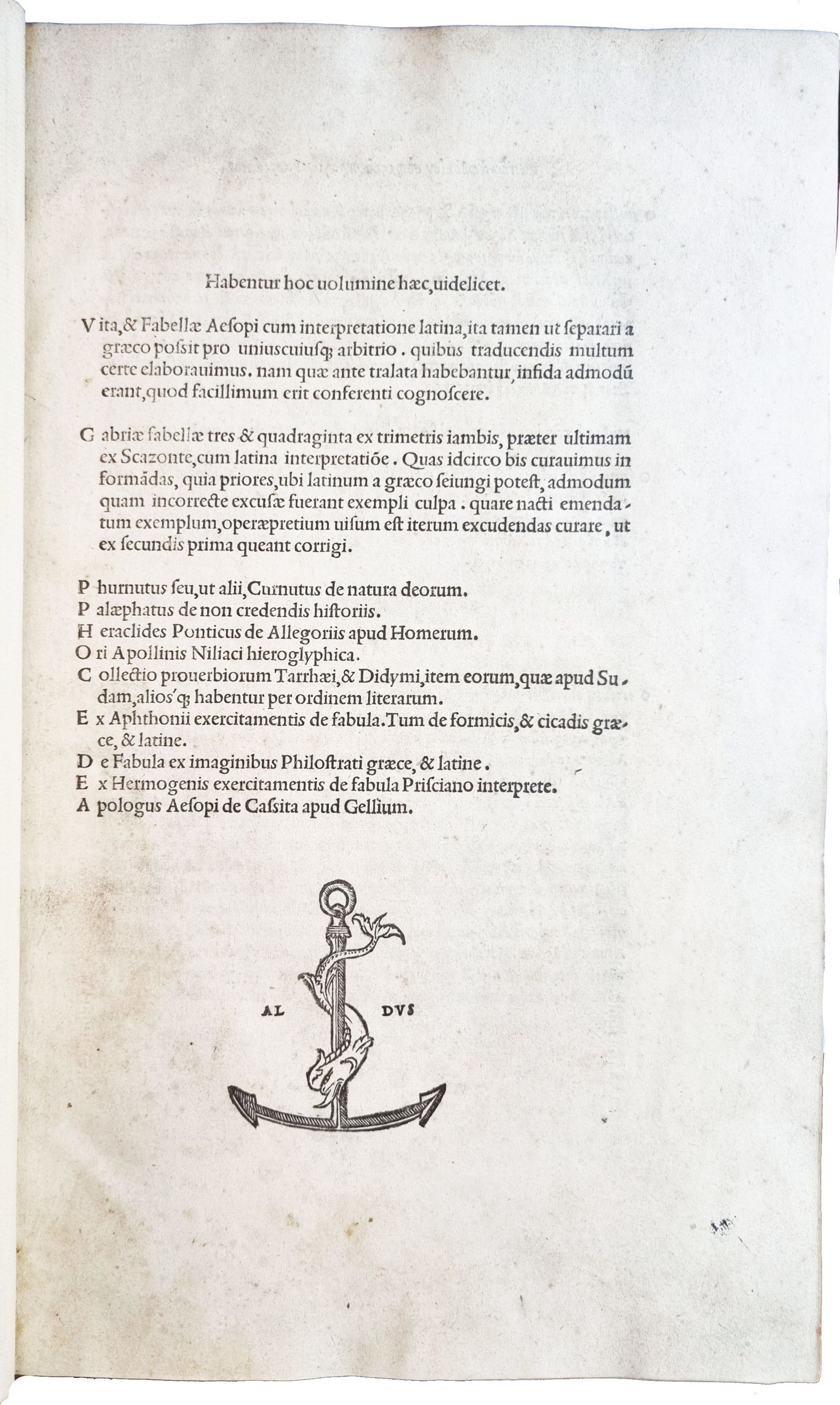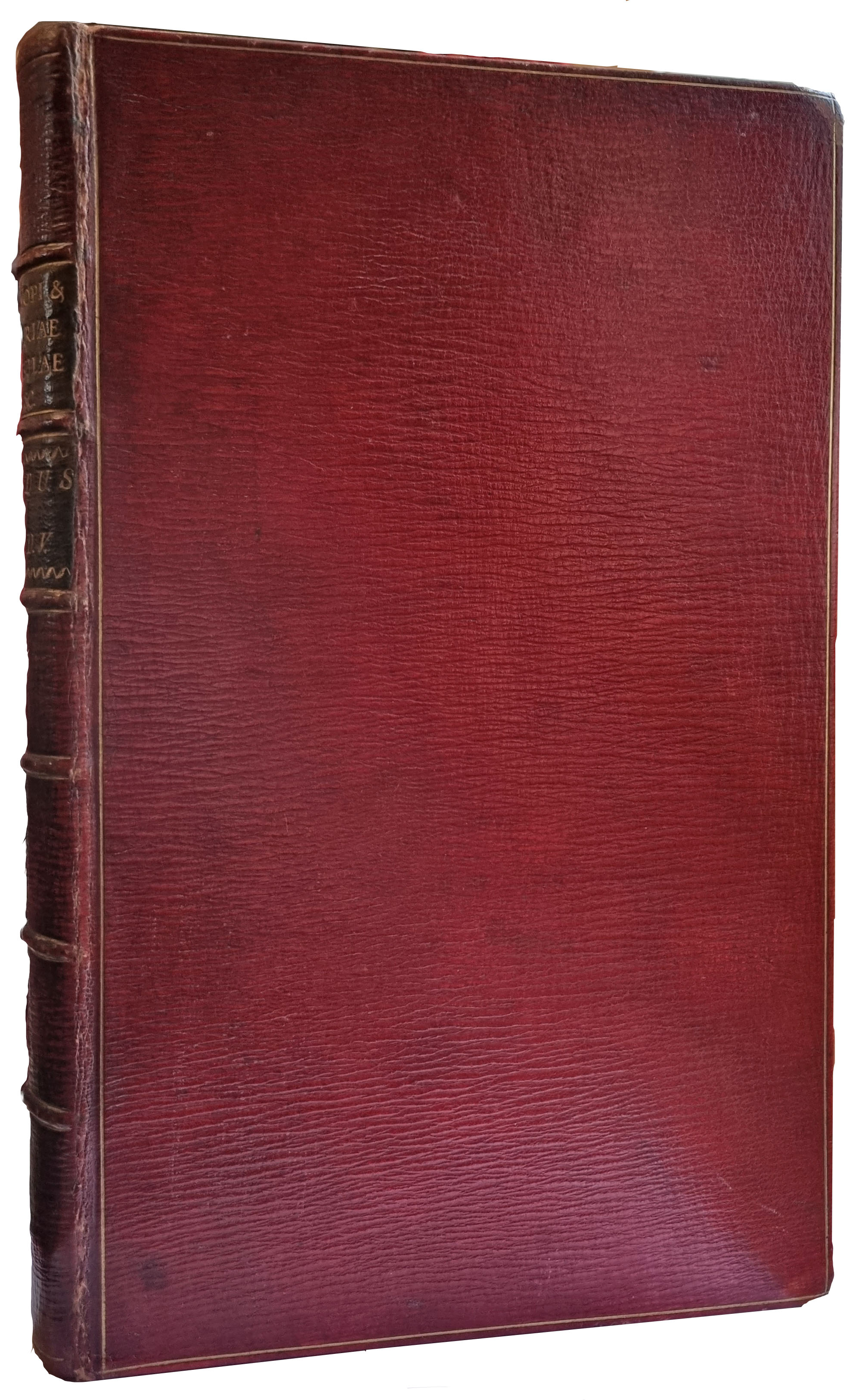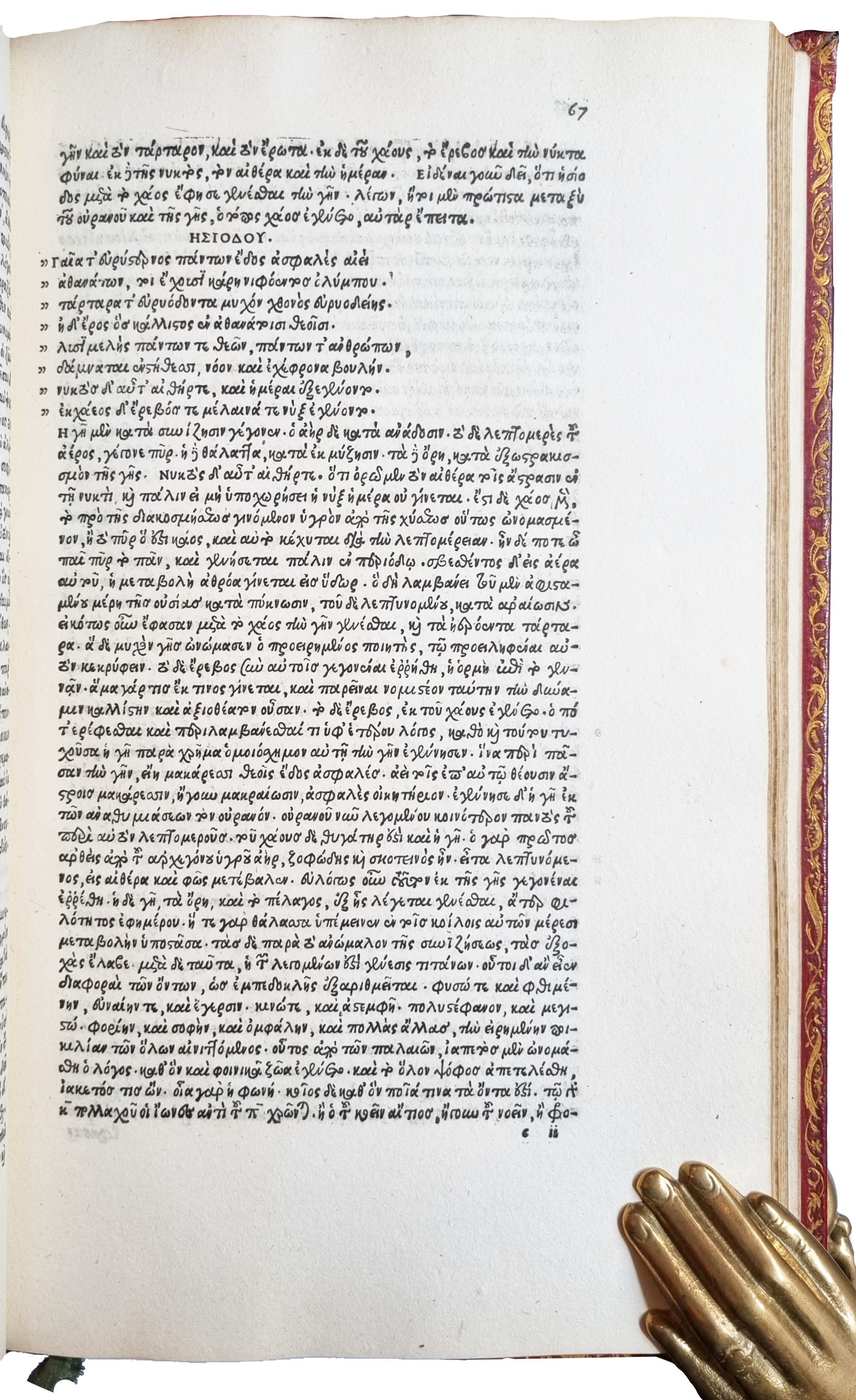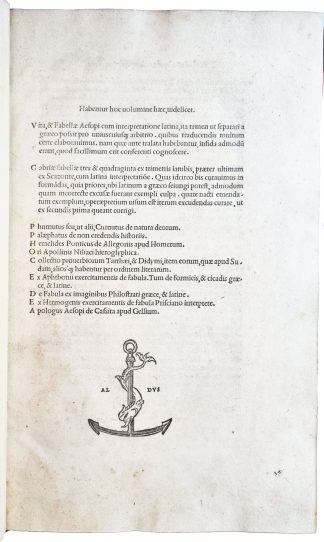AESOP
ONE OF THE RAREST AND MOST SOUGHT-AFTER EDITIONS
Vita & Fabulae...cum interpretatione Latina [and other works]
Venice, Apud Aldum, 1505, October£59,500.00
FIRST EDITIONS (in parts) Folio. 150 ll. A8 a8 B10 b8 C8 c8 D10 d8 e-h8 i6 k-_8, o4. Greek and Roman letter, mostly on alternating ll. partly double column, printer’s dolphin and anchor device on t.p. and larger on verso of last. T.p. very slightly dusty, a very handsome, clean, large, thick paper copy in English late C18 straight grained red morocco, a.e.g. C18 armorial bookplate of Wilmot, 3rd Viscount Listburne on front pastedown, C20 of William Davignon on ffep.
One of the rarest and most sought after editions of the early Aldine press and in practice the earliest obtainable of the author’s original text. The volume comprises the Aesopian Fables in Latin and Greek, together with a life of the author, similarly the 34 fables of Gabrias, Phurnutus on the ‘nature of the Gods’, Palaephatus on disbelieving histories, Heraclides on the allegories of Homer, the hieroglyphs of Horapollo, a collection of proverbs drawn from Tarraeus and Didymus, Aphthonius and Philostratus’ de fabula in Latin and Greek, those of Hermogenes translated by Priscian, and finally an Apologia for Aesop ‘de Cassita apud Gellium’. Almost all of these, apart from the Aesop, are in their first edition or editio princeps, Praz p. 373 particularly notices the Horapollo.
Aesop is the traditional composer of the oldest and most important collection of Greek Fables, which are probably the earliest examples of popular and maybe children’s literature still extant. Herodotus, writing in the fifth century BC already knew of Aesop as an author from the past. Aesop’s life has been overlaid by many romantic fictions but it is fairly certain that he was a Thracian, a house slave and likely a family tutor on the island of Samos at the beginning of the 6th century BC. His Fables are one of the most enduring works of European literature, of which the earliest written compilation probably dates from three centuries later and is now lost. The earliest surviving version is Roman, made by Babrius, tutor to the children of Alexander Severus in the 3rd century AD, though stories from other, especially oriental sources, were probably added. The collection we now recognise was compiled and edited by Maximus Planudes and from which the popular fables of modern Europe have been derived. Whatever their exact origin they have constituted a delightful source of amusement and instruction for children of all ages since they were popularised by the printed editions of the C16, of which none is more important than this printed and edited by Aldus.
BM STC It p 8. Renouard 49: 6,7. “Dans cette rare et belle édition, la version latine des Fables est iutercalée dans le grec”. Brunet I 84 “Belle édit. très-recherchée, et dont les exempl. bien conservés ne se trouvent pas facilement”. Dibden I p247 “ This edition may be considered among the rarer and more beautiful productions of the Aldine Press”In stock







